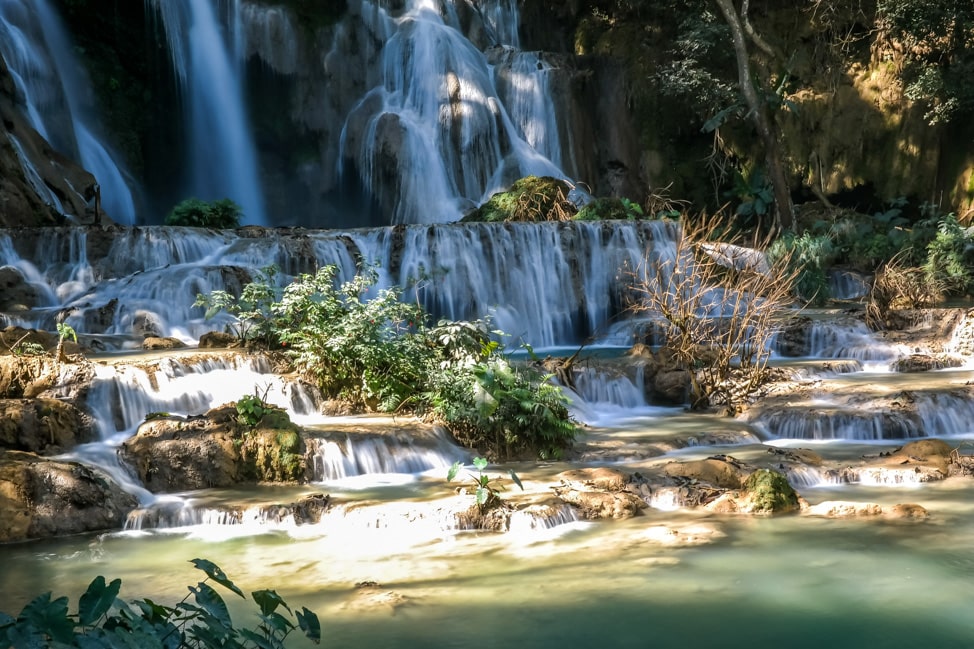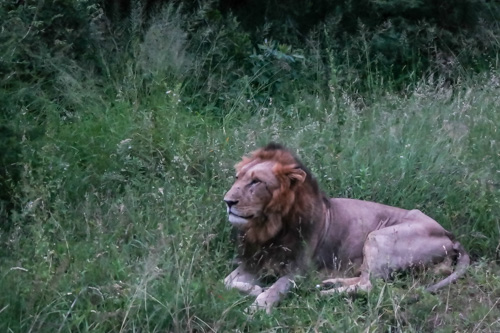If you happen to find yourself in the small town of Luang Prabang, visiting Kuang Si falls is a must-do activity. In fact, in this sleepy corner of Southeast Asia, it’s one of the only activities to get that kind of label and for good reason. It actually lives up to the hype.
Interested in visiting the Kuang Si falls? Check out this guide on how to get there, how much things cost, and what to expect when you arrive from Luang Prabang.
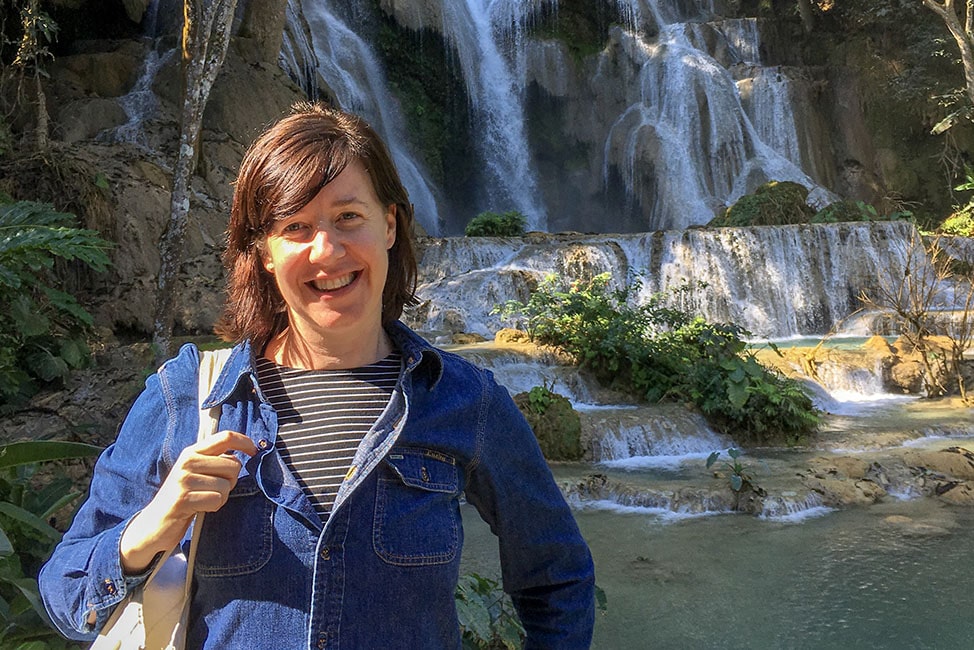
Visiting Kuang Si Falls
The Kuang Si waterfalls are cascading, tiered waterfalls, with three levels descending about 50 meters total. They are known for their aquamarine tinted water that is a result of the water passing over limestone rocks, which gives the falls their unique color and clarity.
The best season to visit is from December to May, which is the drier season in Laos. During this period, the water will be calmer and more vivid blue in appearance. However, from around July to October, the monsoon season brings heavy rainfall that causes the water level to rise drastically, making swimming impossible, hiking not a great idea, and turns that gorgeous water a nasty shade of brown.
Timing is everything I guess.
The falls are open from 8am-5:30pm daily, and entrance tickets cost 20,000 Kip (US$2.30). If you want to enjoy any semblance of peace and quiet around the falls, try to get there as early as possible, even if you hate the sound of an alarm on holiday.
We left Luang Prabang around 9am and arrived at the entrance gate by around 10am, where the private tuk-tuk we hired was one of the few in the main parking area. By the time we left at around noon, the parking lot was overflowing, with more and more buses, vans, and tuk-tuks overflowing into the adjacent parking areas. It would be wise to avoid the peak mid-day to mid-afternoon crush when most of the tours descend upon the falls. Nothing ruins the enjoyment of nature more than a long line of tourists.
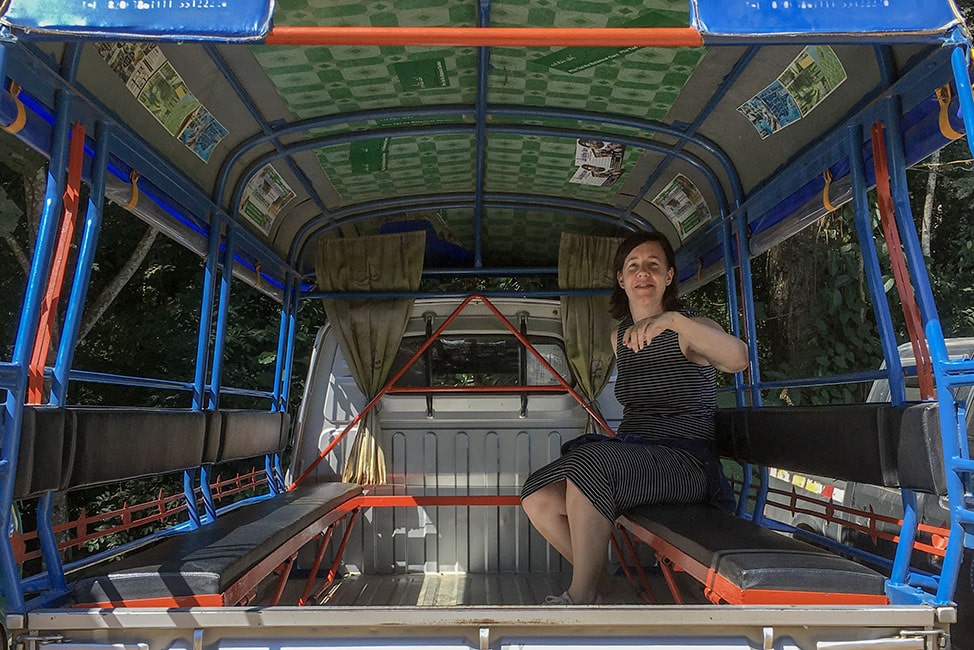
How to Get to Kuang Si Falls
The waterfalls are about 30km south of Luang Prabang, which means about a 45-50 minute drive from Luang Prabang into the surrounding hillside.
A shared tuk-tuk, which fits 7-8 people, will cost about 50,000 Kip (US$6) per person, and the tuk-tuk will leave once it is full. While waiting is not the most convenient, you generally do not have to worry about a scheduled pick up, as they leave constantly from downtown Luang Prabang or can be arranged through a tourist center or guest house.
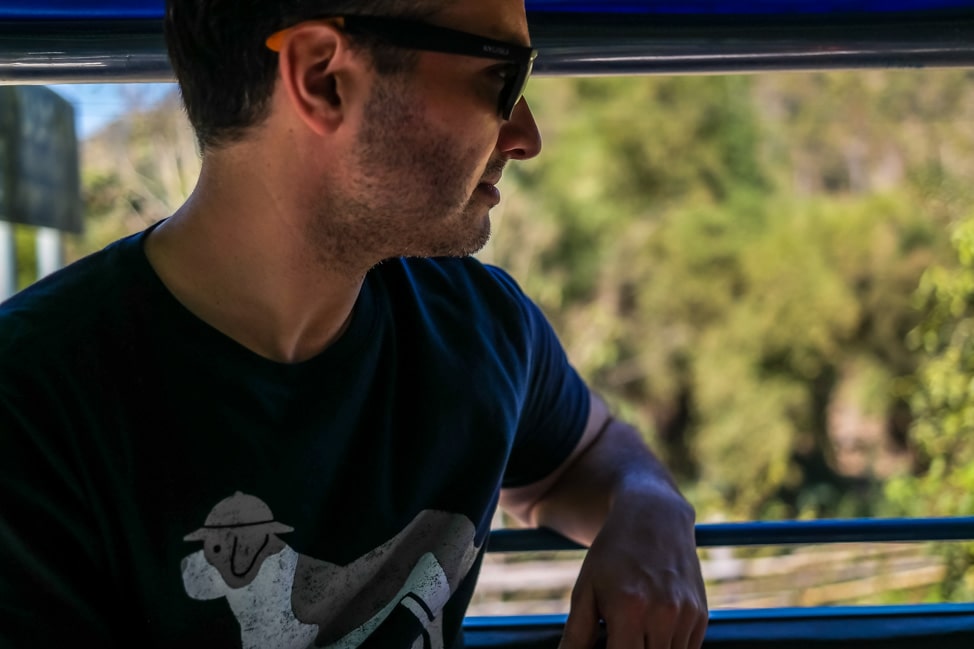
If you want to set your own schedule, you can hire a private tuk-tuk, which will run about 200,000-250,000 Kip (US$23-29). You can flag down any tuk-tuk on the street or arrange it through the hotel. It is a more expensive option, but also fun and convenient, and if you grab a few fellow-travelers with you, you can share the cost. We arranged a private tuk-tuk through our hotel, The Belmond La Résidence Phou Vao. Since the hotel is a few kilometers from downtown (and because our hotel probably worked with the driver to set a more premium price) we paid slightly more than average.
If you are in a group or don’t fancy the idea of sitting on a bench in an open-air truck bed without seat belts, than you can hire a private van or car. This is the most expensive option, running 250,000-300,000 Kip (US$29-35) and is the most common means of transport if you’re on a multi-top day tour or have arranged your ride through an agency or a high-end hotel.
We found the 45-50 minute drive through the hillside quite relaxing and an enjoyable way to kick off our day. We passed by small villages, rural schools, and terraced rice patties. Not to mention the periodic swerves our tuk-tuk made to avoid stray water buffalo enjoying a snack along the road.
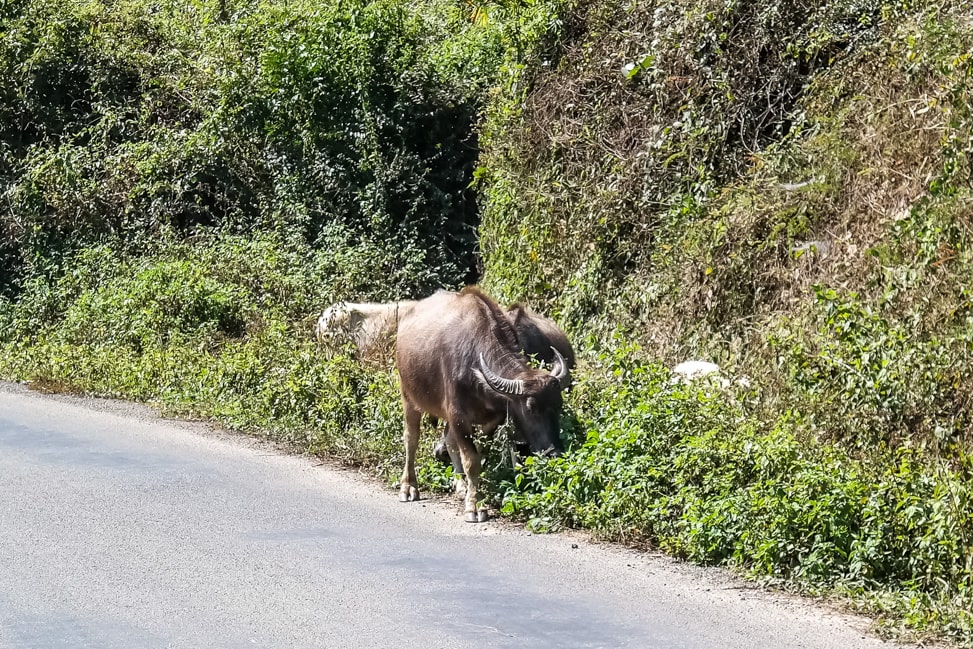
The Bear Rescue Centre at Kuang Si Falls
Once you buy your ticket and pass through the entrance gates at the falls, the path leads you to an unexpected detour: a bear sanctuary. The Tat Kuang Si Bear Rescue Centre is a sanctuary for a variety of species of bears, rescued from captivity where their bile is harvested as an ingredient in traditional Chinese medicine. Not being a lover of animal “sanctuaries” (where they tend to be run more like tourist attractions, than a sanctuary for improving an animal’s quality of life), we were a bit skeptical.
However, the whole program is run by Free the Bears, an international organization dedicated to rescuing bears and ending the practice of bile farms in Vietnam and Laos. The rescue centre had about 10-15 bears, including moon bears, sun bears, and sloth bears. The facilities were spacious (to the point where you couldn’t even see the bears hanging out on the opposite side) and had a myriad of obstacles for them to climb. Primarily, they seemed to enjoy the hammocks spread across the grounds for late morning naps.
You can help Free the Bears by purchasing t-shirts or souvenirs from their small gift stand near the bear captivity. It’s a worthy cause.
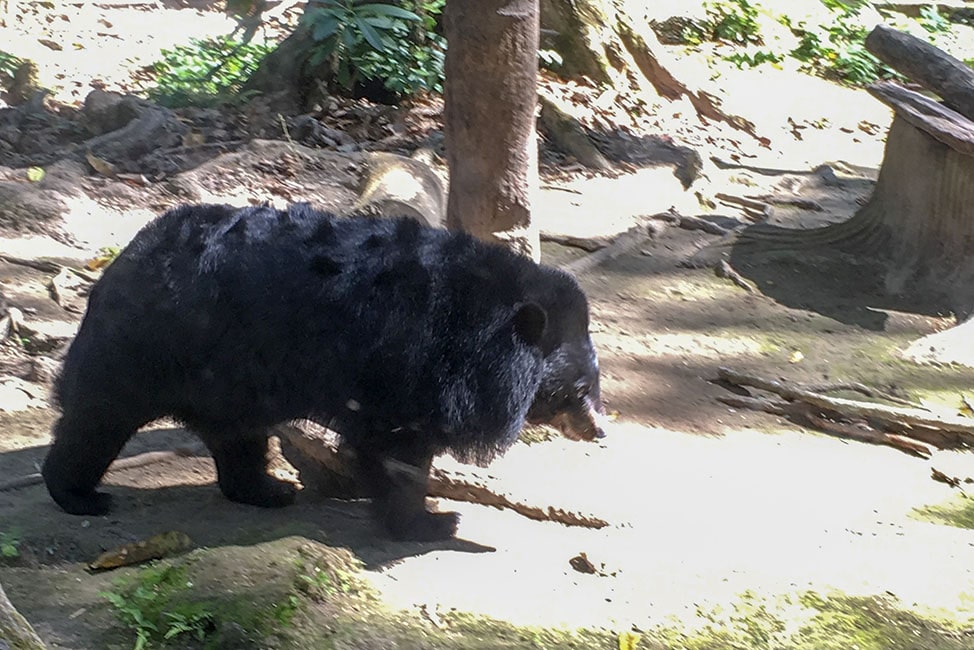
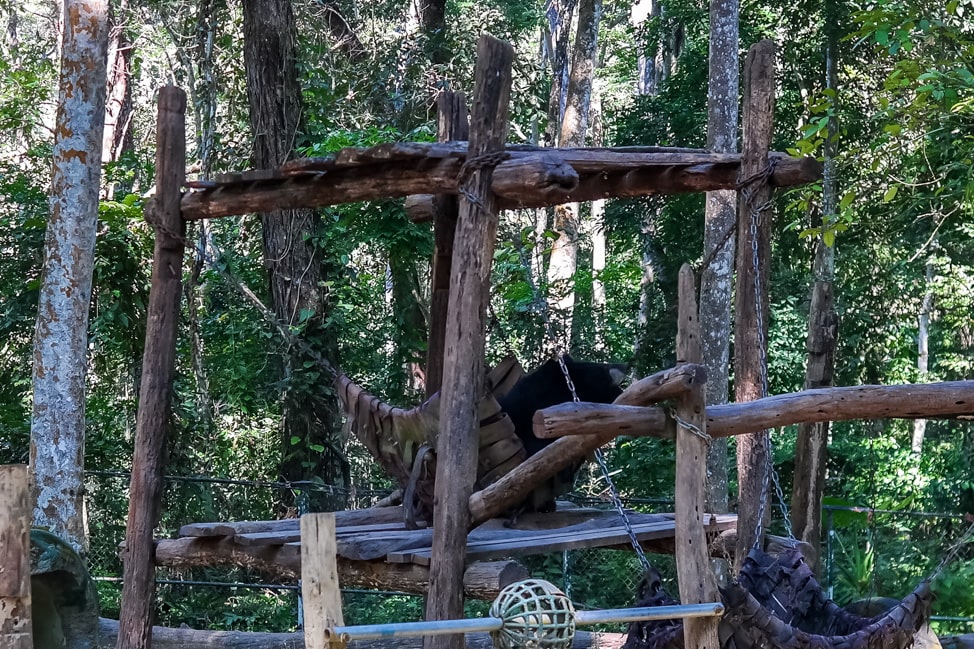
Exploring the Falls
Once past the bear sanctuary, you arrive at the bottom pool of the falls. The areas where swimming is allowed are clearly marked, and be advised to stick to those areas only. There are picnic tables spread around the path running along the falls, and a changing room for those looking to go for a dip.
Be warned that the water, even in the warmer months, is cold.
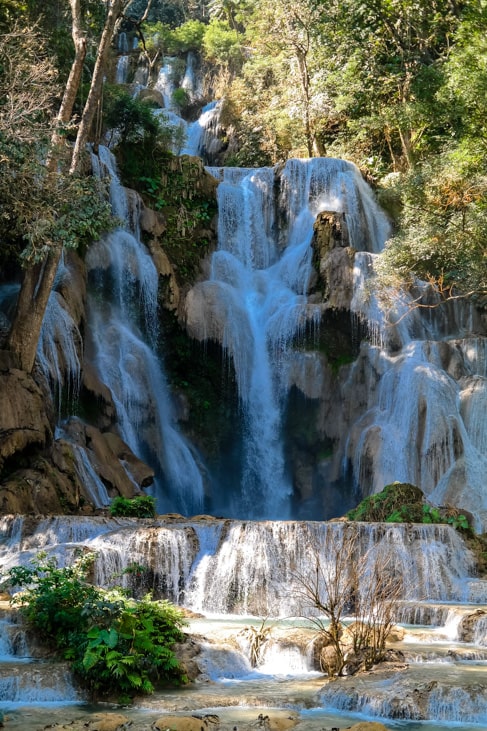
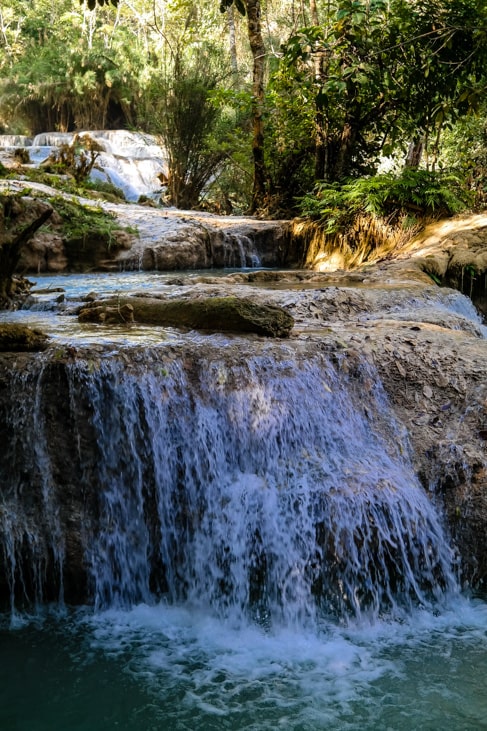
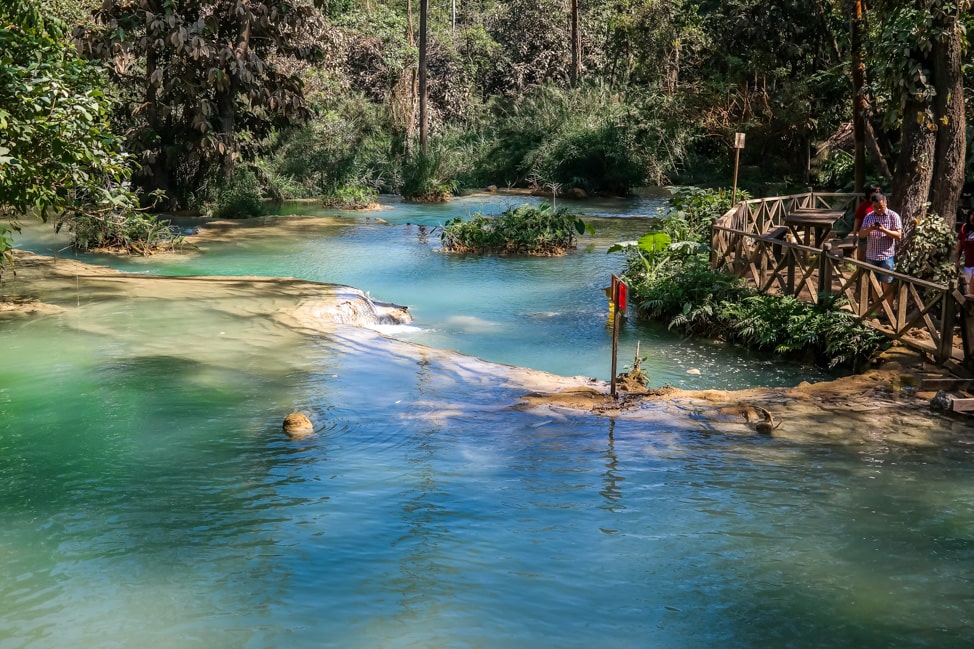
Past the first few pools, you arrive at the base of the main fall, which looks more like a series of smaller falls rather than one larger entity. There is a bridge running across the main pool, so you can get a better look and feel a bit of the spray from the waterfalls.
This main area is the most popular area for visitors, but you can also hike along a path to get to the very top of the waterfalls. There are paths running on either side of the waterfalls, and they are clearly marked. They advise taking the path on the left side of the falls on the journey up, and the path on the right side on the return trip. We did as the sign said, but many people were using both sides to head up to the top.
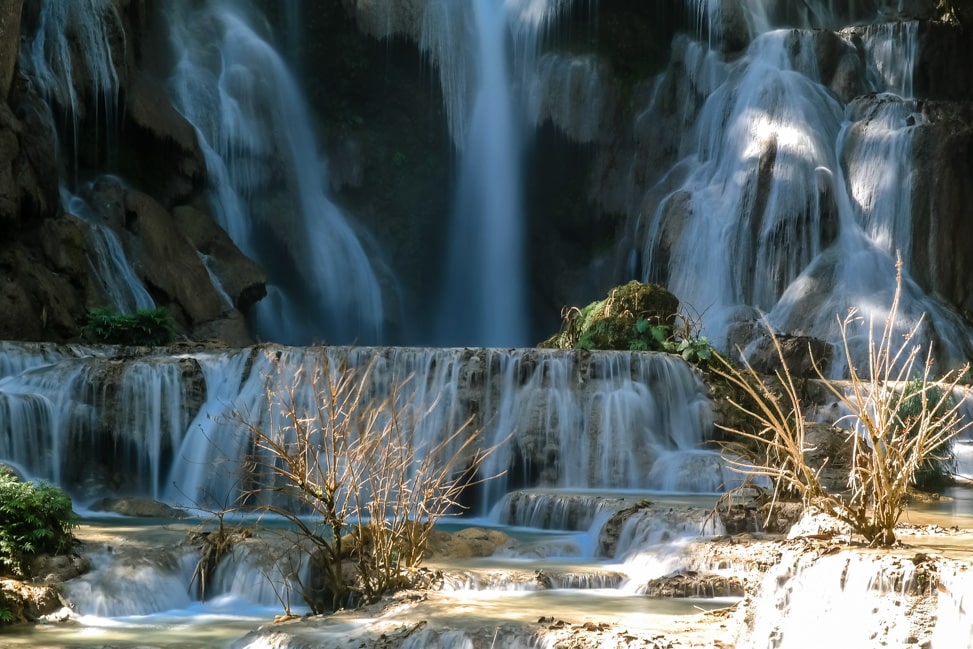
Honestly, I think the path on the right would be easier on the way up, since it has no stairs. When the path is wet, heading down the steep slope on your return trip could be slippery. The path on the left side is mostly stairs, so it is comfortable for going up or down. There is a portion that runs right alongside the water, and the water runs over the stairs, so you do have to be a bit careful.
All in all, it will take about 30-40 minutes to go up, linger at the top of the falls, and make your way back down to the waterfalls.
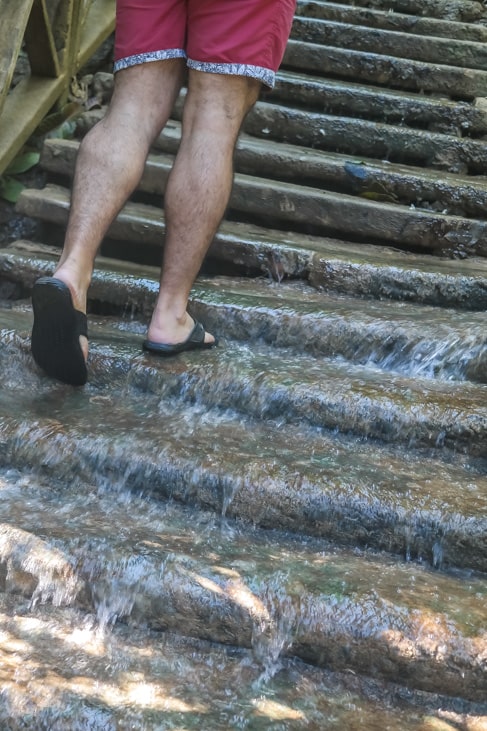
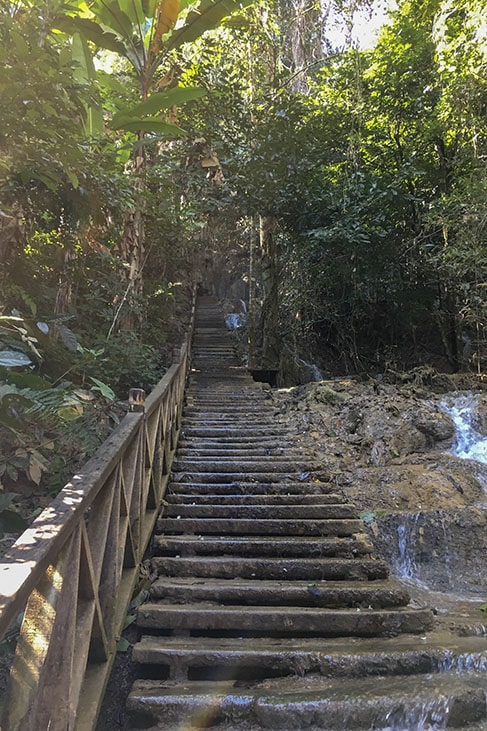
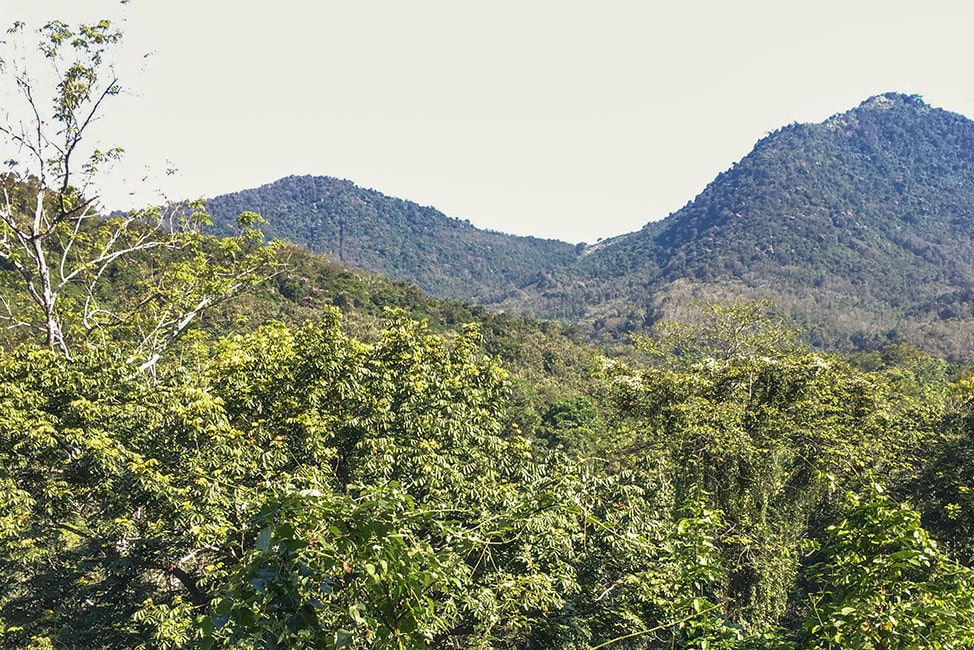
The Kuang Si falls was the perfect size attraction for us in Laos. With only a few hours of obligation, it’s right at the sweet spot of having an activity to look forward to but not having to dedicate an entire day to the event. And if you’re like many people who come to Laos for some peace and quiet in Southeast Asia, a trek to the falls will fit perfectly between your pool lounging and noodle eating schedule.
Interested in other waterfalls? Check out our full guide to exploring the famous Plitvice Lakes National Park in Croatia, with plenty of spectacular cascading waterfalls.

